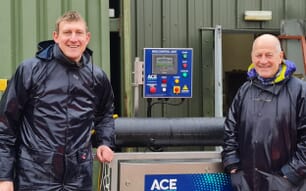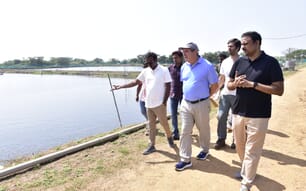Aquaculture production may be practised on an industrial or artisanal scale in various aquatic environments.
The high capital investment characteristic of industrial aquaculture has allowed the installation of cages in exposed environments, offshore, with the help of high-level technology and usually through considerable investment inputs. However, artisanal aquaculture, using inexpensive, locally available and often recyclable materials, is traditionally carried out in highly sheltered areas where the hydrodynamic and meteorological conditions are hardly ever of an extreme nature. Conditions in such sheltered areas often entail a low water exchange rate in cages and the areas surrounding them, which gives rise to problems of environmental pollution and the loss of part of the aquaculture stock. Despite these limiting factors, the development of artisanal cage aquaculture in developing countries can contribute to providing protein for human consumption and also to creating employment in local communities.
The development of private initiatives, which should be backed by policies that favour and promote investment, are essential for the progress and consolidation of this industry. From a technical viewpoint, the major challenge for this development is an inadequate knowledge of the many biological and technical factors involved. The practice of cage aquaculture requires an in-depth knowledge of the aquatic environment, certain other environmental aspects and the biology of the species being reared. Familiarity with the breeding methods and the main technical factors involved in the production process is also necessary. Cage aquaculture has developed relatively recently and information on this subject is not adequately disseminated and shared.
The aim of this manual is to provide entrepreneurs, technicians (of private companies and relevant public and research institutions) and new entrants into this field with advice on the basic criteria for the evaluation of sites and the most suitable choice of cage model for various environmental conditions. Information on the relationship between the physiological requirements of the species and the culture environment (physicochemical, biological and hydrological aspects and the shape and model of cage adopted) is also provided.
Emphasis has been put on the detailed description of a hexagonal wooden cage (components, technical characteristics and operation, stocking volume available, etc.) and on the method for correctly assembling the various components. This model of cage is not as well known as the traditional square or rectangular forms but it is highly advantageous for use in sites that are not completely sheltered. The adoption of hexagonal cages, with their favourable hydrodynamic characteristics due to this geometric shape, makes it possible to establish fish culture farms in sites considered semi-exposed.
In fact, the adoption of this type of cage would make this activity possible in all coastal countries without sheltered areas, such as rivers or the archipelagos of Southeast Asia. In addition, the use of areas with better hydrodynamic conditions should make it possible to achieve higher levels of production of better quality fish.
Moreover, given that the aquatic environment is much more dynamic and offers many more variables than on-shore (land-based) locations, it is believed that the dissemination of prior experience in this field will help to develop the operational strategies and practical solutions that are essential for the success of certain operations. Thus, in this manual, the lead author has tried to share the fruits of his experience acquired during some 15 years of work at sea in the private sector as an aquaculture technician.
The chapters that deal with cage construction and their installation in the sea also contain practical advice on how to carry out these operations correctly.
This manual provides information and suggestions that can be used by both novices who have never been involved in this type of activity and professionals who can compare their ideas and technical solutions with those presented in this document. Indeed, the sharing of different experiences and ideas of each professional can continually help to improve upon the results already achieved.
You can read the following sections of this report by clicking on full report.
Selection of site and suitable species
Site selection
Environmental aspects
Hydrodynamic and geological factors
Physicochemical, ecological and biological factors
Logistical and sociocultural factors
Selection of suitable species
Economic aspects
Physiological aspects
Technical aspects
Choice of cage model
Basic criteria
Economic factors: cost and benefit analysis
Technical factors
Components of a hexagonal wooden cage
Cage model
The frame
The flotation system
The mooring system
The net
Cage construction
Preparation of the mooring posts
Fixing of the wooden structure
Preparation of the flotation system
Cage installation at the farming site
Marking of mooring points
Preparation of mooring lines
Installation of mooring posts and mooring of the cage
Attachment of the net
November 2013



